We start Acte’s tale with the Roman historian Tacitus (56-117 AD) who was contemporary with the information about Nero and Acte. Nero’s mother, the evil power monger Agrippina, had been married to Emperor Claudius whom she poisoned so her son Nero could become Emperor of Rome:


“Meanwhile Agrippina’s influence over Nero was gradually weakened as Nero fell in love with a freedwoman, Acte by name….(She) raved with a woman’s fury having a freedwoman for a rival, a slave girl…Nor would she wait till her son repented or wearied of his passion. The fouler her reproaches, the more powerfully did they inflame Nero, (he was) completely mastered by the strength of his desire for Acte….Then Agrippina changed her tactics and plied the lad with various blandishments and even offered the seclusion of her own bed chamber for the concealment of indulgences….once at midday, when Nero was flushed with wine and feasting, she presented herself attractively attired to her half intoxicated son and offered him her person. When relatives observed wanton kisses and caresses…it was Seneca (Nero’s tutor; later, Nero ordered him to commit suicide in 65) who sought…and hurried to Acte, the freed girl, who alarmed at her own peril and at Nero’s disgrace, told him that the incest was notorious, as his mother boasted of it and that the soldiers would never endure the rule of an impious sovereign. Fabius Rusticus (ancient Roman historian whose works did not survive) tells us that it was not Agrippina, but Nero, who lusted for the crime and that it was frustrated by that same freed girl, Acte.” Tacitus, Annals 13. 14
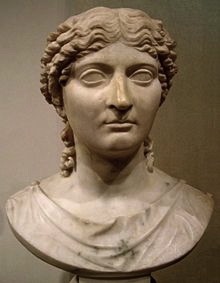
The mothers, relatives, friends and mistresses of Rome’s Emperors held power and influence over them. Agrippina was particularly rankled by her diminished power over her son by a slave girl because she was the sister of one emperor Caligula, the wife of another emperor Claudius and the mother of Nero who became Emperor. Agrippina’s desire was to be ruler of the Roman Empire, but as a woman that was impossible.
Many who surrounded Rome’s court (and many who surround modern areas of power) were conniving and power-hungry, especially Nero’s mother Agrippina and Livia, Augustus’ wife. As Shakespeare, over 1,500 years later, penned in King Henry IV, Part 2, Act 3, Scene 1, l.31: “Uneasy lies the head that wears a crown.” And, eventually, uneasy lay Agrippina’s head. After trying unsuccessfully to kill his mother by drowning, by a clever collapsing ceiling over her bed and by ramming her boat, Nero finally dispatched assassins who did kill Agrippina on March 23, 59. She was 41.
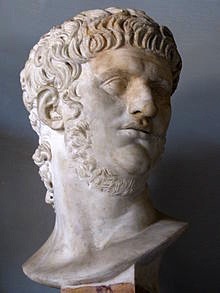
Nero had become Emperor five years previously when he was 17 in 54 AD. According to all surviving Roman historians, he was from the beginning an evil degenerate. In 64, he burned Rome to the ground (and “fiddled”) so he could rebuild it in his own image. He publicly blamed Christians and began the first Imperial persecution of Christians that lasted 300 years.
How he met and began an affair with Acte is not known. She “had been bought as a slave in Asia” (Cassius Dio, Roman History 61.7) and was probably adopted and freed by Nero’s great-uncle Emperor Claudius.
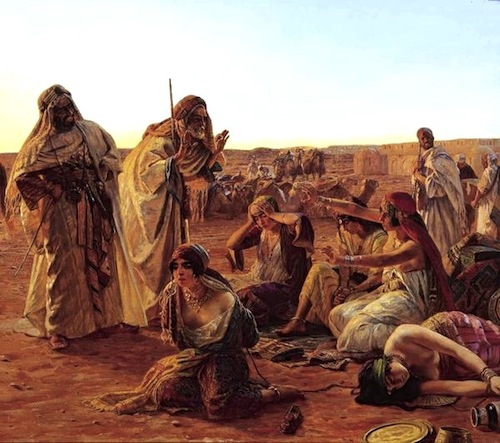
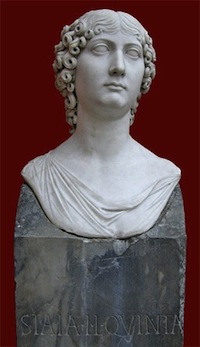
As palace regulars, Acte and Nero maybe knew each other. Some say Acte (in Latin meaning “act”) was an actress. We know that Nero would assemble people in a theater where they could not escape and would dress up, play instruments and give recitations so long that some feigned death in order to escape. Perhaps Acte, as many female slaves and prostitutes, was a mime actress as some claim and they met in theatrical surroundings. We will never know for sure. It is for sure Nero was obsessed with Acte for at least three years. He gave her estates in Velitrae, in Sardinia and in Puteoli. Acte is the only wife, man, woman, child or mistress Nero had sex with who never demanded any thing from him or meddled in affairs of state.
Acte apparently had slaves who had become Christians. Christianity reached Rome shortly after the Resurrection during the Jewish celebration of Pentecost (c. 30 AD) which Jews and Gentile proselytes from Rome attended (Acts 2:10). Christianity was particularly attractive to the c. 50% of Rome’s people who were slaves because it preached a doctrine of equality whether one was rich or poor, slave or free, Jew or Gentile, male or female (Galatians 3:28). Some posit Claudia Acte came to Christ through her own slaves or through the preaching of Paul, as tradition asserts. We will never know.
One thing we do know. After Acte was either banished by Nero because she had become a Christian or left of her own free will, she was no longer a presence in the palace after c. 62 AD. The martyrdoms in Rome of the seminal early church evangelists, the Jews Peter and Paul, were in c. 64-67 under Nero’s reign.
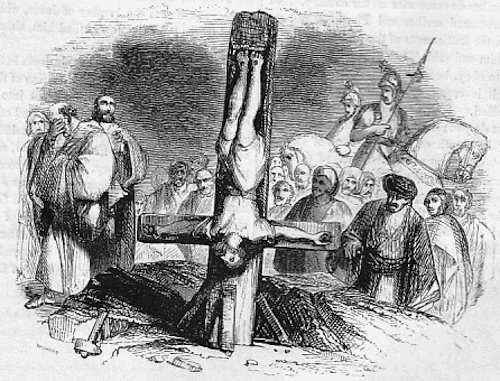

Nero’s own death was by suicide on July 9, 68 when he was 30 years old. He had become such an anathema in Rome by his debauchery and erratic behavior that none of his relatives or friends would tend to his burial. Suetonius in his Lives:Nero 50 writes:
“Nero was buried at a cost of two hundred thousand sesterces and laid out in white robes embroidered with gold….His ashes were deposited by his nurses, Egloge and Alexandria, accompanied by his mistress Acte, in the family tomb of the Domitii on the summit of the Hill Gardens.” [NOTE: The epitaph of Acte has been discovered at her estate in Velitrae. The inscription is classified as CIL X 6599, but it is not available.]
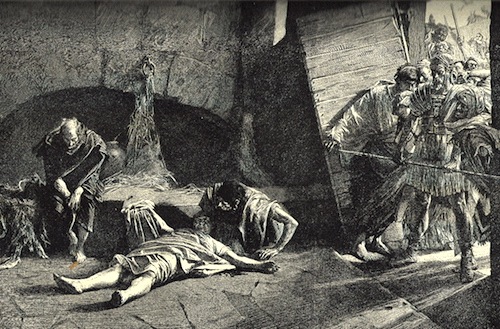
After Nero’s suicide, his body was apparently abandoned. Acte claimed the body and gave him a 200,000 sesterces burial and garbed him in white robes embroidered with gold. After Nero’s body was cremated on the pyre, Acte and his two childhood nurses buried his ashes. Acte, the freed slave, was the only person of any note who would/could be found to give Rome’s Emperor “a proper burial.” —Article by Sandra Sweeny Silver

